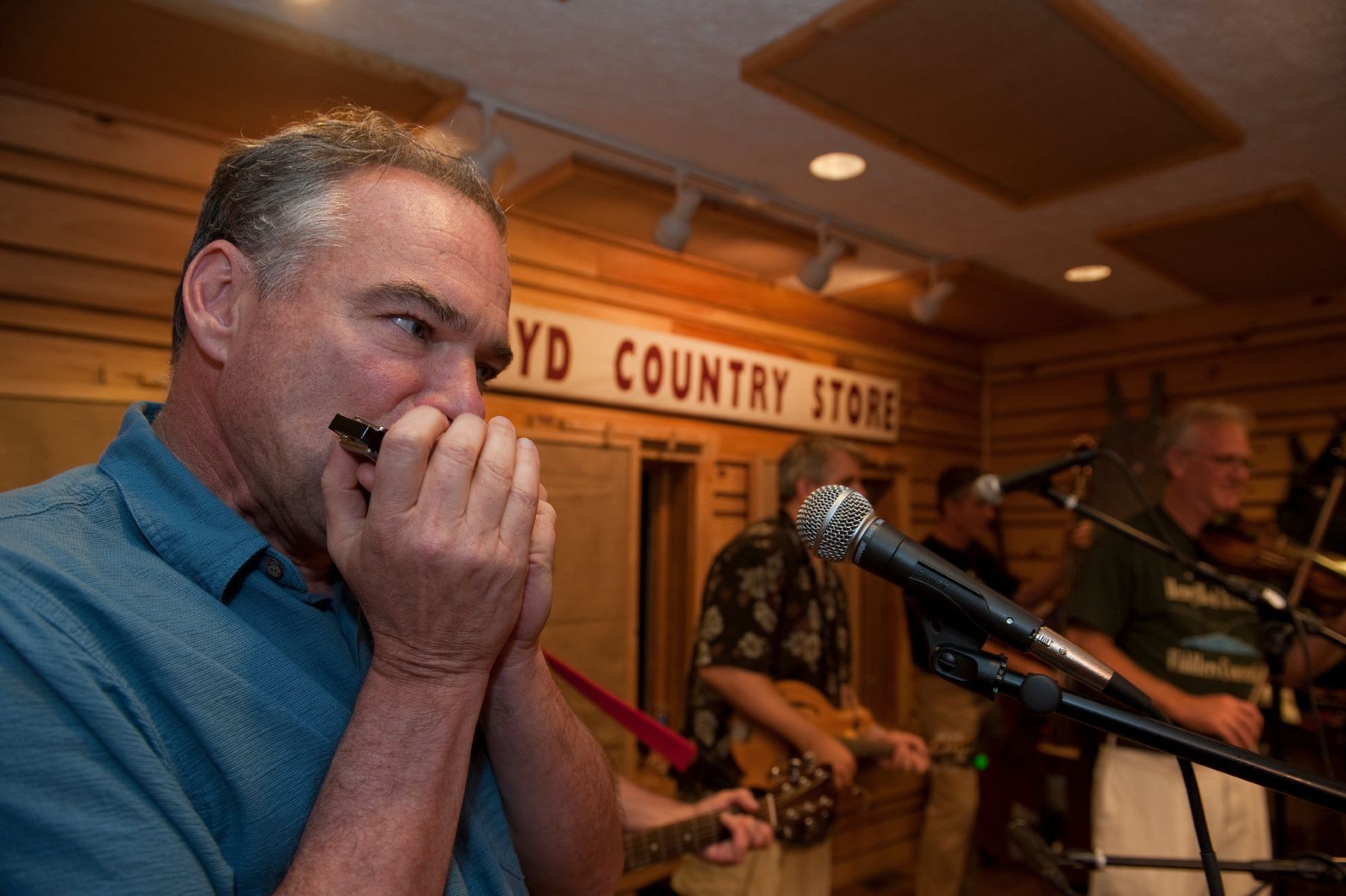

Jazz
How To Learn A Jazz Standard
Modified: January 22, 2024
Learn how to play and master jazz standards with our comprehensive guide. Discover essential techniques and tips for embracing the beautiful complexity of jazz.
(Many of the links in this article redirect to a specific reviewed product. Your purchase of these products through affiliate links helps to generate commission for AudioLover.com, at no extra cost. Learn more)
Table of Contents
Introduction
Welcome to the world of jazz! Jazz music is known for its improvisation, complex harmony, and swinging rhythms. It has captivated listeners for decades and continues to inspire musicians of all levels. If you have a love for jazz and want to expand your musical repertoire, learning a jazz standard is an excellent starting point.
A jazz standard is a popular and widely recognized composition within the jazz genre. These songs have withstood the test of time and are frequently played and recorded by jazz musicians. By learning a jazz standard, you not only gain insight into the history of jazz, but you also develop important musical skills such as improvisation, chord progressions, and listening.
In this article, we will explore the process of learning a jazz standard step by step. Whether you’re a beginner jazz musician or an experienced player looking to delve deeper into the genre, this guide will provide you with the knowledge and tools to tackle any jazz standard with confidence.
So, grab your instrument, put on some legendary jazz recordings, and let’s embark on this jazz journey together!
Selecting a Jazz Standard
When it comes to choosing a jazz standard to learn, there are countless options available. The key is to select a song that resonates with you and matches your current skill level. Here are a few tips to help you in the selection process:
- Consider your musical taste: Do you prefer a swinging, upbeat tune or a slow, melancholic ballad? Think about the style of jazz you enjoy listening to and start exploring standards within that style. It’s important to choose a song that you genuinely enjoy, as it will keep you motivated throughout the learning process.
- Assess your skill level: If you’re new to jazz, it’s best to start with a relatively simple standard. Look for songs with straightforward chord progressions and melodies. As you progress, you can challenge yourself with more complex tunes that contain advanced harmonic structures and intricate melodies.
- Consult with fellow musicians: Reach out to jazz musicians and teachers for recommendations on suitable jazz standards. They can provide valuable insight based on their experience and offer suggestions that align with your musical goals.
- Expand your repertoire: While it’s essential to work on a single jazz standard at a time, it’s also beneficial to continually add new songs to your repertoire. This diversity will enable you to showcase your versatility as a jazz musician and expand your improvisational vocabulary.
Remember, the goal of selecting a jazz standard is to find a song that inspires you and matches your abilities. By carefully choosing a piece that resonates with you, you’ll be more motivated to learn and explore the nuances of the composition.
Listening to Recordings
One of the most crucial aspects of learning a jazz standard is immersing yourself in the music by listening to recordings. By listening to established jazz musicians performing the song, you develop a deeper understanding of the melody, harmony, and overall feel of the composition. Here are a few reasons why listening to recordings is essential:
- Internalize the melody: Listening to different interpretations of the jazz standard helps you internalize the melody. You can analyze how different musicians approach the phrasing, dynamics, and expression, allowing you to develop your own unique interpretation.
- Study improvisation: Jazz is built on improvisation, and by listening to recordings, you can gain insight into how musicians approach improvising over the chord progressions of the standard. Pay attention to the motifs, vocabulary, and rhythmic ideas they employ and incorporate them into your own improvisation practice.
- Understand the stylistic nuances: Jazz standards come from different eras and styles within the jazz genre. By listening to various recordings, you can identify the stylistic nuances of different time periods, such as swing, bebop, cool jazz, or modal jazz. This knowledge will help you play the standard in an authentic and stylistically appropriate manner.
- Develop your ear: Jazz is an aural tradition, and by extensively listening to recordings, you train your ear to recognize chord progressions, melodic lines, and harmonic movements. This ear training is essential for improvisation and playing with other musicians.
When listening to recordings, make sure to analyze multiple versions of the jazz standard. This allows you to gain a broader perspective and appreciate the diversity of interpretations and arrangements. Take notes, observe the musicians’ choices and techniques, and apply what you learn to your own playing.
Remember, listening to jazz recordings is not only a learning experience but also an enjoyable one. Let the music inspire you and guide you in your journey to mastering the jazz standard.
Analyzing the Harmony
Understanding the harmonic structure of a jazz standard is essential for interpreting and improvising over the composition. Analyzing the harmony allows you to grasp the underlying chord progressions and uncover the musical relationships within the song. Here are some steps to help you analyze the harmony of a jazz standard:
- Identify the key: Determine the key in which the jazz standard is written. This will serve as the foundation for understanding the chord progressions and improvising.
- Break down the chord progressions: Analyze the chord progressions used in the song. Often, jazz standards follow common chord progressions such as ii-V-I, iii-VI-ii-V, or the blues form. Look for patterns and recurring phrases in the chord progressions.
- Explore the chord voicings: Familiarize yourself with the different chord voicings used in the jazz standard. Experiment with different inversions and variations to add color and depth to your playing.
- Study the extensions and alterations: Jazz standards often incorporate extended and altered chords to create tension and color. Learn the different extensions (e.g., 9th, 11th, 13th) and alterations (e.g., b9, #11) and experiment with incorporating them into your playing.
- Identify the primary tonal centers: Pay attention to the tonal centers within the song. This will help guide your improvisation and provide a sense of resolution and stability.
As you analyze the harmony of the jazz standard, consider using tools such as lead sheets, fake books, and chord charts. These resources provide notated melodies with chord symbols, giving you a roadmap to navigate the composition.
Remember, analyzing the harmony is not just an intellectual exercise but a practical tool to enhance your understanding and performance of the jazz standard. By internalizing the chord progressions and exploring different voicings, you can confidently and creatively express yourself within the musical framework of the composition.
Memorizing the Melody
Learning and memorizing the melody of a jazz standard is essential for developing a strong foundation in the composition. The melody serves as the focal point of the song and provides the framework for improvisation and interpretation. Here are some tips to help you memorize the melody:
- Listen and sing: Start by listening to recordings of the jazz standard and sing along with the melody. This process helps internalize the pitches, rhythm, and phrasing of the melody. Singing the melody also helps build a strong ear connection to the composition.
- Break it down: Break the melody into smaller sections and take them one at a time. This allows you to focus on the intricate details and make the learning process more manageable.
- Play it by ear: Try to play the melody by ear on your instrument. This approach encourages your ear to guide your fingers and helps you develop a deeper understanding of the melodic structure.
- Write it down: Transcribe the melody and write it down on paper or in a digital notation software. This visual representation can aid in memorization and provide a reference point as you practice.
- Immerse yourself: Immerse yourself in the melody by playing it repeatedly. Start slow and gradually increase the tempo as you become more comfortable. This repetition helps solidify the melody in your memory.
As you memorize the melody, pay attention to the nuances and phrasing used by different musicians in their interpretations. This allows you to add your own personal touch when performing the jazz standard.
Remember, memorizing the melody is not just about rote memorization, but about internalizing the melodic contour and the emotional essence of the composition. By deeply connecting with the melody, you’ll be able to bring it to life in your performances and improvisations.
Studying the Chord Progressions
Understanding and studying the chord progressions of a jazz standard is crucial for improvisation and creating harmonic variations within the composition. Here are some steps to help you effectively study the chord progressions:
- Review the lead sheet or chord chart: Begin by familiarizing yourself with the chord symbols and their positions on the lead sheet or chord chart. Understand how the chords relate to the melody and the overall harmonic structure of the song.
- Analyze the chord qualities: Study the qualities of each chord in the progression, such as major, minor, dominant, or diminished. This understanding will guide your improvisation and help you make informed melodic choices.
- Explore chord voicings: Experiment with various chord voicings to play the chords in different positions and inversions. This will add texture and variety to your playing and give you a better understanding of the harmonic possibilities within the jazz standard.
- Play the progressions in different keys: Transpose the chord progressions into different keys to develop familiarity and flexibility in your playing. This exercise enables you to navigate the song confidently in any key.
- Study common chord substitutions: Jazz standards often allow room for chord substitutions and reharmonizations. Explore common chord substitutions and learn how they can enhance the harmonic progression and provide fresh musical ideas.
As you study the chord progressions, listen to recordings and play along with them. Pay attention to how different musicians interpret and navigate the changes. This active listening will deepen your understanding of the harmonic choices and help you internalize the progressions more effectively.
Remember, studying the chord progressions is not just about memorizing the changes, but about understanding the harmonic language and using that knowledge to express yourself creatively. Embrace the exploration of the chord progressions and let them inspire your improvisation and musical interpretations.
Learning the Rhythm
Rhythm is the heartbeat of jazz, and developing a solid sense of rhythm is essential for playing a jazz standard with conviction and groove. Here are some tips to help you learn and internalize the rhythm of a jazz standard:
- Tap your foot: Start by tapping your foot along with the recordings of the jazz standard. This helps you establish a steady pulse and internalize the rhythmic feel of the song.
- Focus on the rhythmic patterns: Identify the rhythmic patterns and motifs present in the melody and chord progressions. Practice playing and repeating these patterns until they become natural and ingrained in your playing.
- Play with a metronome or backing track: Use a metronome or play along with a backing track to develop your sense of timing and rhythmic accuracy. This helps you stay in sync with the tempo and strengthens your internal rhythm.
- Analyze the syncopation: Jazz music often incorporates syncopated rhythms, where accents fall on off-beats or weaker parts of the measure. Pay attention to these syncopations and practice playing them accurately to capture the essence of jazz rhythm.
- Transcribe rhythms: Transcribe rhythmic passages from recordings of jazz musicians performing the standard. This allows you to study their rhythmic phrasing and incorporate their rhythmic ideas into your own playing.
- Experiment with rhythmic variations: Once you have a solid foundation in the rhythm of the jazz standard, feel free to experiment with rhythmic variations. Elongate notes, add staccato or legato articulations, and explore different rhythmic subdivisions to add interest and personal expression to your playing.
Remember, learning the rhythm is an ongoing process. Continuously immerse yourself in jazz music, attend live performances, and play with other musicians to further develop and refine your sense of rhythm.
By mastering the rhythm, you’ll be able to create an infectious groove and infuse the jazz standard with energy and authenticity.
Understanding the Form
Understanding the form of a jazz standard is crucial for effectively navigating the composition and engaging in improvisation. The form refers to the structure of the song, including the arrangement and organization of its sections. Here are some key points to help you understand the form of a jazz standard:
- Identify the sections: Familiarize yourself with the different sections of the composition, such as the verse, chorus, bridge, or interlude. Each section may have distinct chord progressions, melodies, or rhythmical patterns.
- Recognize the AABA and ABAC forms: Many jazz standards follow the AABA or ABAC form. In AABA form, the song consists of four sections: A, A, B, A. In ABAC form, there is a contrasting middle section before returning to the original theme. Understanding these common forms helps you anticipate the structure of the song and navigate through it.
- Pay attention to the repeats and variations: As you play through the jazz standard, be attentive to any repeated sections, as well as variations that may occur in subsequent repetitions. This will enhance your awareness of the form and enable you to adapt your improvisation accordingly.
- Study endings and codas: The way a jazz standard concludes is an important aspect of its form. Explore different endings and codas used in various recordings of the song and consider incorporating them into your own performances.
- Listen to recordings for reference: Listening to recordings of jazz musicians performing the standard is an excellent way to gain a deeper understanding of the form. Pay attention to how they navigate through the different sections and maintain cohesion within the structure of the composition.
By understanding the form of a jazz standard, you can anticipate chord changes, recognize recurring sections, and communicate effectively with other musicians during performances. This knowledge provides a solid foundation for improvisation and allows you to approach the composition with confidence and creativity.
Remember, each jazz standard has its unique form, so take the time to analyze and familiarize yourself with the structure of each individual song. This understanding will enrich your musical experience and enable you to fully engage with the composition.
Practicing Improvisation
Improvisation is a hallmark of jazz music, allowing musicians to express their creativity and individuality within the context of a jazz standard. Here are some tips to help you practice and develop your improvisation skills:
- Internalize the melody and chord progressions: Before diving into improvisation, ensure that you have a solid understanding of the melody and chord progressions of the jazz standard. This foundation will serve as a roadmap for your improvisation and help you make informed melodic choices.
- Start with simple improvisation techniques: Begin by experimenting with simple improvisation techniques such as playing the melody with variations, adding passing tones, or embellishing the rhythms. This allows you to develop confidence and familiarity with improvising over the jazz standard.
- Use scales and arpeggios: Familiarize yourself with the relevant scales and arpeggios that correspond to the chord progressions of the jazz standard. Practice playing these scales and arpeggios in different positions and inversions to develop fluency and dexterity on your instrument.
- Transcribe solos: Transcribing solos from recordings of renowned jazz musicians is an excellent way to learn and internalize jazz vocabulary and phrasing. By studying and recreating these solos, you gain insight into melodic ideas and rhythmic patterns that can be incorporated into your own improvisation.
- Play with backing tracks or a metronome: Utilize backing tracks or a metronome to create a simulated musical environment for improvisation practice. This helps develop your sense of timing, rhythmic accuracy, and the ability to navigate through different chord progressions.
- Gradually increase the complexity: As you gain confidence and proficiency in your improvisation, gradually increase the complexity of your melodic lines, incorporate more advanced rhythmic patterns, and explore more intricate harmonic variations.
- Experiment with different styles and approaches: Jazz allows for a wide range of styles and approaches to improvisation. Experiment with different approaches such as swing, bebop, modal, or fusion, and explore your own unique style of improvisation within the context of the jazz standard.
Remember, improvisation is a journey that requires patience, dedication, and practice. Embrace the process, take risks, and trust your musical instincts. With consistent practice, you will develop your own voice as an improvising jazz musician.
Enjoy the freedom and spontaneity that improvisation brings, and let it showcase your musicality and creativity within the framework of the jazz standard.
Applying Jazz Vocabulary
Developing a strong jazz vocabulary is key to expressing yourself authentically and improvising effectively within a jazz standard. Jazz vocabulary refers to the collection of melodic ideas, licks, phrases, and patterns commonly used in jazz improvisation. Here are some tips for applying jazz vocabulary to your playing:
- Study and transcribe jazz solos: Transcribing solos from legendary jazz musicians is an excellent way to build your jazz vocabulary. By analyzing and learning these solos, you become familiar with the stylistic nuances, phrasing, and melodic ideas used by these masters.
- Practice playing jazz licks and patterns: Dedicate time to practicing jazz licks and patterns derived from your transcriptions or jazz instructional materials. Incorporate these licks into your improvisation, allowing them to become part of your musical vocabulary.
- Explore different jazz styles: Jazz encompasses a wide range of styles, from swing to bebop, modal to fusion. Immerse yourself in recordings and performances within various jazz styles to expand your vocabulary and develop a versatile approach to improvisation.
- Experiment with variations: Take the jazz vocabulary you’ve learned and experiment with variations. Modify the rhythm, play the idea in different keys or positions, and add your own personal touch to incorporate the vocabulary into your improvisation.
- Blend jazz vocabulary with your own ideas: While it’s important to learn from jazz vocabulary, strive to develop your own musical ideas and voice. Blend the jazz vocabulary you’ve acquired with your unique melodic concepts, allowing your improvisation to reflect your personal expression.
- Expand your knowledge of scales and modes: Jazz vocabulary often derives from the use of scales and modes. Continuously work on expanding your knowledge of different scales and modes and understand how they relate to chord progressions. This understanding allows you to apply jazz vocabulary more effectively within the harmonic context of the jazz standard.
Remember, developing a strong jazz vocabulary is an ongoing process. Consistent practice, active listening, and dedicated study are key to internalizing and fully utilizing jazz vocabulary in your improvisation.
By incorporating jazz vocabulary into your playing, you enhance your ability to communicate the language of jazz, connect with other musicians, and capture the essence of the jazz standard with authenticity and creativity.
Playing with a Band
Playing with a band is an essential part of the jazz experience. Collaborating with other musicians not only enhances your musicality but also helps you develop essential skills for live performances and artistic interaction. Here are some tips for playing with a band when exploring a jazz standard:
- Listen and communicate: Actively listen to each member of the band while playing. Pay attention to the dynamics, tempo, and subtle cues from fellow musicians. Communication is key in a jazz ensemble, and it allows for greater cohesion and musical synergy.
- Support the soloist: When another musician takes a solo, your role as a band member is to provide supportive and complementary accompaniment. Listen to the soloist’s ideas and respond with appropriate chord voicings, rhythmic figures, and dynamics that enhance their improvisation.
- Take turns improvising: In a jazz ensemble, members take turns improvising over the chord progressions of the jazz standard. When it’s your turn to solo, take creative risks and explore the musical possibilities while keeping in mind the overall musical context.
- Trade fours: Trading fours is a common practice in jazz, where musicians take turns playing short four-bar improvisational phrases. Use this opportunity to engage in musical conversation and exchange ideas with your bandmates.
- Stay in the pocket: Maintain a solid sense of time and groove throughout the performance. Keep the rhythmic foundation steady and provide a supportive and driving pulse for the ensemble.
- React and adapt: Jazz is a fluid and spontaneous art form, and changes can happen on the fly during a performance. Stay attentive and adapt to any unexpected musical decisions or improvisational ideas from your bandmates. This ability to react and adapt contributes to the vibrancy and excitement of a live jazz performance.
- Embrace collective improvisation: Jazz allows for collective improvisation, where all members of the band contribute to the improvisational conversation simultaneously. Embrace this opportunity to interact and engage with your bandmates, creating a rich and dynamic musical dialogue.
Remember, playing with a band is a collaborative experience. It’s a chance to connect with other musicians, share in the joy of creating music together, and collectively bring the jazz standard to life.
By actively listening, supporting, and engaging with your fellow band members, you’ll create memorable and dynamic performances that capture the spirit of jazz.
Conclusion
Congratulations on embarking on your journey to learn a jazz standard! By following the steps outlined in this guide, you have equipped yourself with the knowledge and tools to approach any jazz standard with confidence and creativity.
Remember, selecting a jazz standard that resonates with you and matches your skill level is the first step. Listening to recordings, analyzing the harmony, and memorizing the melody provide a solid foundation for understanding the composition. Studying the chord progressions, learning the rhythm, and understanding the form further deepen your connection to the music.
As you progress, practicing improvisation and applying jazz vocabulary will allow you to express yourself uniquely within the framework of the jazz standard. Playing with a band completes the jazz experience, fostering musical collaboration and enabling you to engage in a dynamic conversation with fellow musicians.
While this guide provides a roadmap, it’s important to approach jazz with an open mind and a spirit of exploration. Jazz is a genre that celebrates individual expression and encourages improvisation. So, embrace the joy of experimentation, trust your musical instincts, and don’t be afraid to make the music your own.
Now it’s time to pick a jazz standard, listen to inspiring recordings, analyze the harmony, and dive into the creative world of improvisation. Whether you’re playing alone in a practice room, jamming with friends, or performing on stage, allow the timeless beauty of jazz to guide you on your musical journey.
So, pick up your instrument, immerse yourself in the rich history of jazz, and let the magic of a jazz standard captivate your heart and soul.











